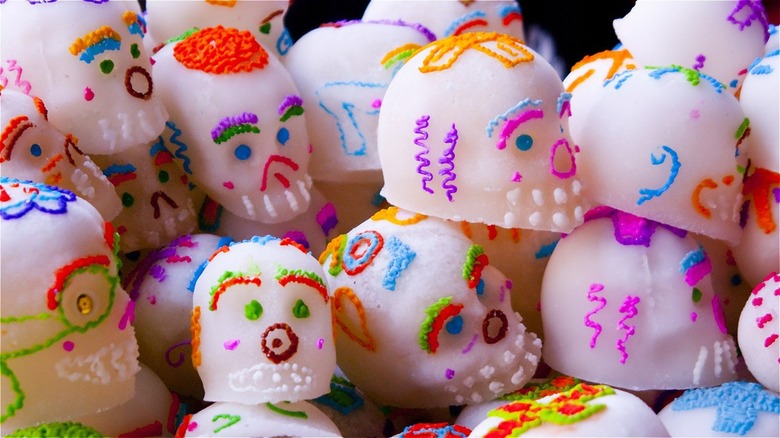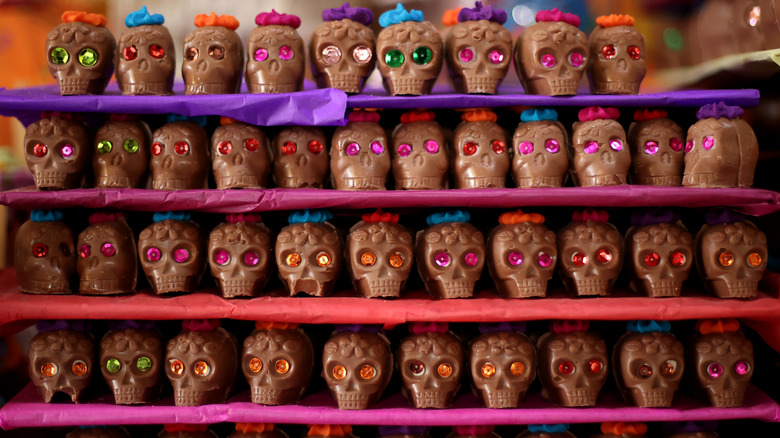Can Day Of The Dead Sugar Skulls Be Eaten?
Day of the Dead is a time-honored Aztec ritual that has gone on to become a beloved Mexican tradition. This holiday, which takes place at the beginning of November, isn't so much a period of mourning as it is a celebration to remember the lives of loved ones who have passed on. It's known for its colorful processions, costumes, and streets full of song and dance, but one of the most iconic symbols associated with Day of the Dead is the sugar skull. Families will either purchase them or decorate their own to adorn the altars of the deceased. While there are many traditional Day of the Dead foods you can try, sugar skulls should probably not be one of them.
If you're curious as to how sugar skulls hold their shape so well, this feat is achieved with the help of fixatives like meringue powder or an egg wash, which works to bind the sugar particles together. Even though these offerings are pure hunks of sugar which are technically edible, it's not recommended because of the raw egg whites that are often used to make them sturdier. Day of the Dead sugar skulls are considered more of a folk art than a tasty treat, and most of the flashy decorations used are non-edible anyway. Their designs will usually feature swirling, intricate patterns piped with icing, along with sequins, feathers, foil, beads, and more. Not the most appetizing toppings, are they?
Some sugar skulls are made of chocolate, which you can eat
In Mexico, there are several outdoor markets that sell unique, hand-crafted ornaments that are specially made for decorating ofrendas (altar offerings) for Day of the Dead. Besides traditional sugar skulls, those perusing the markets may also find sugar cats or molded sugar coffins with fun skeletons that pop out. There's also a sugar skull fair held in the city of Toluca where thousands of chocolate sugar skulls are sold — it often takes over four months for the chocolatiers to make enough for the event. These sugar skulls in particular look especially appetizing, and are the most common example of the made-to-eat versions. Otherwise, sugar skulls are supposed to represent a loved one. Slips of paper with that person's name are sometimes placed on the skull's forehead, so you can imagine how disrespectful it would be to eat one after it's been dedicated.
One Arizona teacher and sugar skull maker, Michele Delgado, told AZ Central that, at most, eating a sugar skull would give you an unpleasantly upset stomach. "It's all sugar and meringue. Those combined are really hard to digest," she elaborates. If you're really keen on having edible sugar skulls at your Day of the Dead celebration, it's best to find some actual dessert recipes instead. This way, you can have fun decorating frosted sugar cookies, skull-shaped chocolates, or other fully edible treats as a fun and festive activity to do with the whole family.

